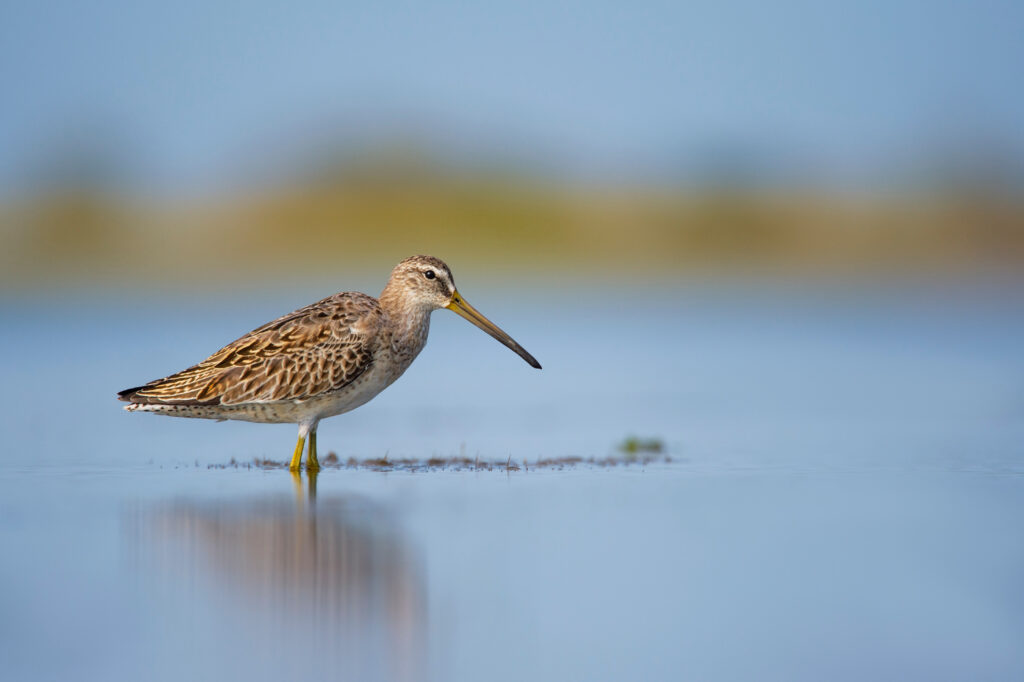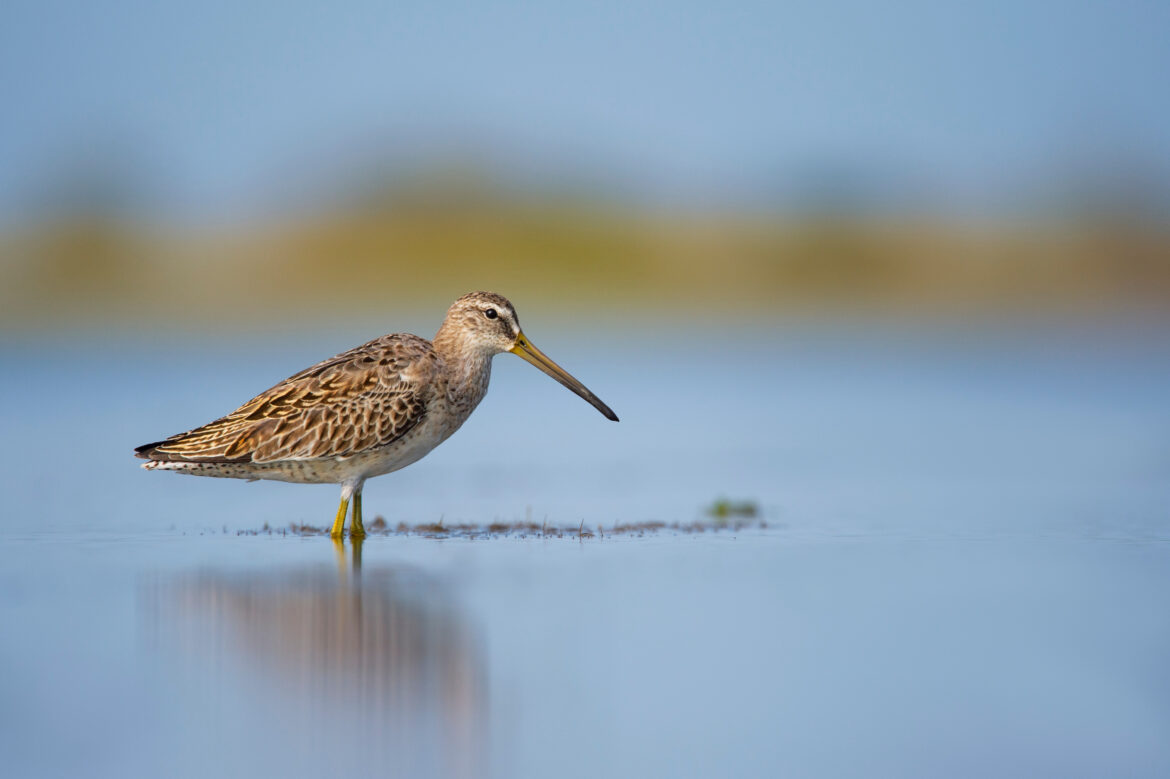By Taylor Bennett

Gulf Coast Bird Observatory surveys for non-breeding shorebirds along the Upper Texas Coast as part of our avian research. We continue to monitor Matagorda Beach, Bryan Beach, Quintana Beach, Surfside Beach, and Follet’s Island until the end of March. Our target species are Piping Plover, Snowy Plover, Red Knot, Black Skimmer, and American Oystercatcher. Along with these species, many other shorebird species winter here as well such as Short-billed Dowitcher.
Like many shorebirds, Short-billed Dowitchers migrate in the summer to breed in the subarctic regions of Canada and Alaska. We typically observe them here in the fall and winter, feeding and roosting in flocks. They are medium-sized chunky shorebirds and are very similar to Red Knot, except their bill is longer and thinner.
Short-billed Dowitcher plumage changes depending on the season. During this time of year, they are brown and gray, with white bellies and gray breasts. They have a very distinct white eye stripe or eyebrow, yellow-greenish legs, and in flight there is a distinct white wedge that forms a “V” along their backs.
Short-billed and Long-billed Dowitcher are difficult to tell apart. Believe it or not, the difference is not in the length of their bill like their name implies. In fact, the male Long-billed Dowitcher bill length is exactly the same size as the Short-billed Dowitcher and it is the female Long-billed Dowitcher that has the longer bill. The bigger difference between the Short-billed Dowitcher and the Long-billed Dowitcher is their breast color and the habitat they are observed in. Short-billed Dowitcher breasts are a lighter gray and spotted while Long-billed Dowitcher breasts are slightly darker and barred. They also share the same song, but their calls are also different. Short-billed Dowitcher have a mellow tu tu tu and Long-billed Dowitcher have a sharp keek.

By Ray Hennessy
Short-billed Dowitcher prefer salt water habitats such as tidal mudflats, beaches, salt marshes, and areas along the coast, while Long-billed Dowitcher prefer freshwater habitat such as freshwater pools, tidal lagoons, and are most commonly found inland. So, if you spot a Dowitcher on the beach, odds are that it is most likely a Short-billed Dowitcher. My intern and I observed them while surveying along the shore of Follet’s Island.
Short-billed Dowitchers have similar feeding habitats as Red Knots. Since their bill is slightly longer and thinner, they can probe deeper in the mud or sand. They have two different feeding methods: jabbing and probing. Jabbing is when they quickly strike their bill down and immediately bring it back up. Probing is when they plunge their bill in the substrate and rapidly move it up and down. They are often described as being like sewing machines and their bill acts as the needle. They feed on mostly buried invertebrates such as marine worms, small clams, fiddler crabs, shrimp, isopods, and amphipods. During the spring, they will feed on horseshoe crab eggs.
Short-billed Dowitcher populations are in decline due to hunting, loss of habitat, and changes in habitat. All shorebirds are protected due to the Migratory Bird Treaty Act. The best way to help them is give them their space, drive slowly, and to keep pets on a leash. On behalf of Gulf Coast Bird Observatory, thank you for reading.

